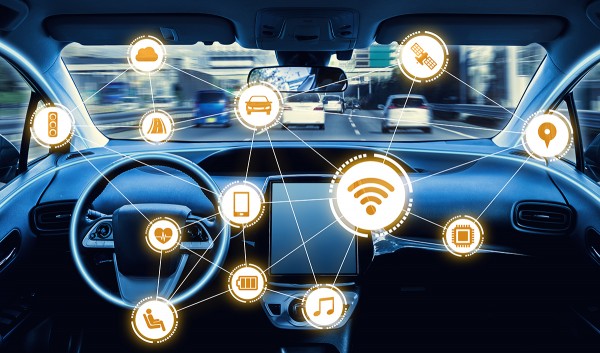Autonomous vehicles will soon become one of the main communication and data hubs for our lives if you believe some technologists. As Artificial Intelligence (AI) becomes the norm for more functions in the car, more data will need to be collected.

There are four main types of data that will be actively collected:
- Non-sensitive data – this will be data like congestion data, parking availability…
- Personal - location and biometrics details that can be used to access the car, where you normally charge your car…
- Special category data – data collected during a collision calling of the emergency services by the car – able to share who is in the car and any specific needs
- Commercial sensitive data – data specific to the manufacturer – linked to securing their IP
Data helps the system to learn – a key aspect of AI is also the ability to piece together diverse sets of data to proactively predict actions and suitable responses. Best way to put these data types into context is to look at them in a scenario.
Image the following situation and what data will be available to be shared. You are driving along a road and you see the traffic has stopped ahead. You are in a self-driven car so you are not worried that the car will handle the situation. However in this situation the brakes are applied too late resulting in the car hitting the stationary traffic.
Lets look at this situation based on the data being created and where and how it can be shared.
- The fact that the brakes have not performed as expected is of particular interest to the car manufacturer. However they will not want this data available to a wide audience due to its commercial sensitivity. So this data would be classified as commercial sensitive data with specified sharing limited to the car manufacturer alone.
- The information that there is congestion on a particular road is useful information to a wide range of organisations. By wide reporting on traffic alerts enables autonomous vehicles to navigate round congestion points. So this would be classified as non-classified data and would be widely shared with traffic tracking services.
- If there is an accident then there is a range of special category information that can be shared. Information such as if air bags had been detonated will give emergency services an indication of the severity of the accident; information about how many people are in the car will help them to send the correct level of support to the scene.
- In this the case of sharing personal information can help to indicate the identity of the person driving the car; if a child seat had been occupied at the time of the accident. Also any personal medical records that will help the emergency services to provide the correct care.
Data helps the system learn. AI systems improve their responses over time with additional training data and testing. Being able to handle this level of data is new for the automotive industry with data levels that have been more common in datacentre and network type industries. Expect to see a requirement of skill movement into the automotive industry.
Sharing data is going to be key to the overall impact of autonomous cars. If all the data is held within the car manufacturers the wider impact of the data will be limited. The wider the sharing of data, the wider the benefits. Sharing of anonymous data with local governments can enable them to understand traffic flow, condition of the roads; sharing with infrastructure organisations enables improved road planning, parking needs, 5G rollout needs and hotspots and charging sites for electric vehicles.
Sharing of data cannot be discussed without considering the security requirements. There have been well documented hacking of vehicles in the past. As the data becomes more valuable then it increases its likelihood of being hacked. One of the main challenges whether regulations can keep up with the pace of innovation currently happening. Security is going to be a key barrier that auto manufacturer need to overcome if consumers are to be convinced of their data protection. Firstly for the safety of the AI aspects of the car – the last thing a person wants is a car stopping and powering down in inappropriate places. Then the safety of the data that is being created which outlines a persons habits, driving styles, who is in the car with them, where they go regularly for example.
The automotive industry is moving from long design and test cycles to having to shorten their time to market and increased demand on future-ready vehicles that have the flexibility to adapt to new technology. This is the largest cultural change the automotive industry has experienced in the last 40 years.
